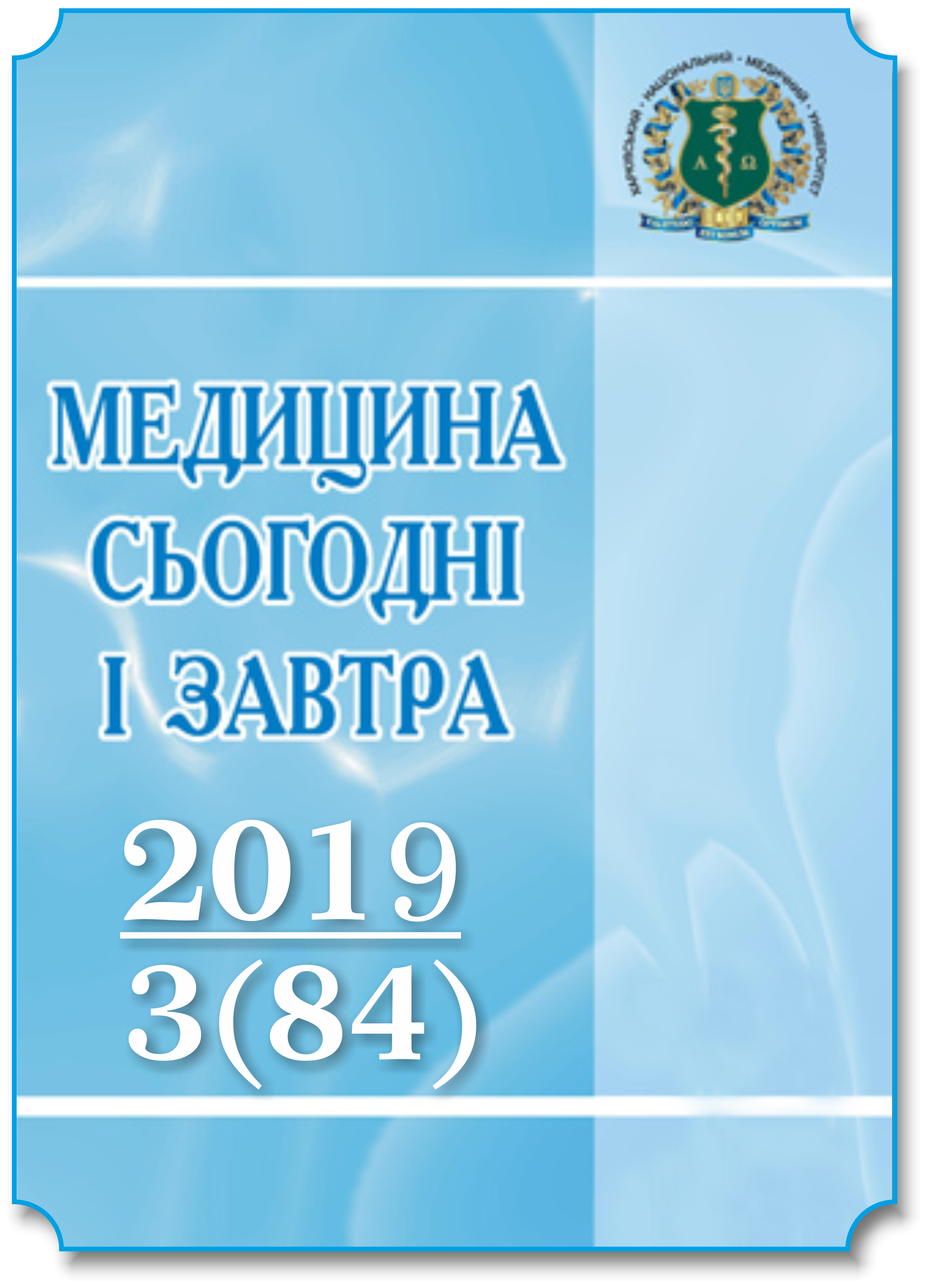Abstract
The complex of macromicroscopic methods has revealed the features of the sulci structure of the brain’s occipital lobe medial surface. Macromicroscopic, morphometric, topographic and anatomical, statistical and mathematical analysis were used. The sulci of the medial surface of the brain's occipital lobe are classified into permanent, typical and non-permanent. The complex of anatomical structures of the medial surface of the brain's occipital lobe includes the parietooccipital sulcus, calcarine sulcus, cuneus, calcarine spur, additional sulci. The parietooccipital and calcarine sulci are divided into segments: posterior (distal process), anterior (proximal process), common (common area). The parietooccipital sulcus is connected to the anterior end of the calcarine sulcus at 98,5 %. The length of the parietooccipital sulcus is min 16,0 mm and max 58 mm, M=35,8 mm, depth is min 9,0 mm and max 43,0 mm, M=24,3 mm. It was found that in 35 % of cases, the posterior end of the calcarine sulcus does not reach the apex (angle) of the occipital lobe of the brain by min 2,0 mm and max 14,0 mm, M=7,8 mm. In 43 % the posterior end of the calcarine sulcus bifurcates. The distance between the posterior end of the calcarine sulcus and the upper end of the parietooccipital sulcus is min 18,0 mm and max 64,0 mm, M=39,8 mm. The length of the calcarine sulcus is min 37 mm and max 79 mm, M=54 mm. The depth of the anterior part of the calcarine sulcus is min 8,0 mm and max 36,0 mm, M=20,7 mm; the depth of the posterior part is min 5,0 mm and max 22,0 mm, M=12,8 mm.
References
Tsekhmistrenko T.A., Vasilieva V.A., Shumeiko N.S. (2012). Mezhpolusharnaia asimmetriia v razvitii somatosensornoi lobnoi i zritelnoi kory bolshoho mozha cheloveka v postnatalnom ontoheneze [The cerebral hemispheric asymmetry of human somatosensory, frontal and visual cortex in postnatal ontogenesis]. Astrakhanskii meditsinskii zhurnal – Astrakhan Medical Journal, issue 4, pp. 264–266 [in Russian].
Heins D.E. (2008). Neiroanatomiia: atlas struktur, srezov i sistem [Neuroanatomy: an atlas of structures, sections, and systems]. Moscow: Logosfera, 344 p. [in Russian].
Baibakov S.Ye., Haivoronskii I.V., Haivoronskii A.I. (2009). Sravnitelnaia kharakteristika morfometricheskikh parametrov holovnoho mozha u vzrosloho cheloveka v period zreloho vozrasta (po dannym mahnitno-rezonansnoi tomohrafii) [Comparative characteristics of morphometric parameters of the brain in an adult during adulthood according (to magnetic resonance imaging)]. Vestnik Sankt-Peterburhskoho universiteta. Seriia Meditsina – Vestnik of Saint Petersburg University. Medicine Series, issue 1, pp. 111–117 [in Russian].
Boholepova I.N., Krotenkova M.V., Malofeieva L.I., Konovalov R.N., Ahapov P.A. (2010). Arkhitektonika kory mozha cheloveka: MRT-atlas [Architectonics of the Human Cortex: magnetic resonance therapy atlas]. Moscow: Atmosfera, 216 p. [in Russian].
Zimushkina N.A., Kosareva P.V., Cherkasova V.H., Khorinko V.P. (2013). Histolohicheskaia i morfometricheskaia kharakteristika hippokampa v razlichnyie vozrastnyie periody [Histological and morphological hippocamp characteristics in different age periods]. Permskii meditsinskii zhurnal – Perm Medical Journal, vol. 30, № 1, pp. 98–103 [in Russian].
Isaiev P.O. (1960). K anatomii borozd holovnoho mozha detei hrudnoho vozrasta [To the anatomy of the grooves of the brain of infants]. Proceedings from Sbornik rabot Kazakhskoho respublikanskoho nauchnoho obshchestva anatomov, histolohov i embriolohov, posviashchennyi 40-letiiu Kazakhskoi SSR (Vol. 2) [the Kazakh Republican Scientific Society of Anatomists, Histologists and Embryologists dedicated to the 40th anniversary of the Kazakh SSR (Vol. 2)]. (pp. 99–119). Alma-Ata [in Russian].
Tukhtaboiev I.T. (2003). Vozrastnyie i individualnyie izmeneniia tsitoarkhitektoniki korkovykh polei 17, 18, 19 zatylochnoi oblasti v levom i pravom polushariiakh mozha cheloveka [Age-related and individual changes in the cytoarchitectonics of the cortical fields 17, 18, 19 of the occipital region in the left and right hemispheres of the human brain]. Doctor’s thesis. Moscow, 215 p. [in Russian].
Lavrov V.V. (2010). Mezhpolusharnaia asimmetriia i opoznaniie nepolnykh izobrazhenii pri izmenenii emotsionalnoho sostoianiia [Interhemispheric asymmetry and identification of incomplete images at change of the emotional state]. Sensornyie sistemy – Sensory Systems, vol. 24, № 1, pp. 41–50 [in Russian].
Seroukh O.H., Maslovskii S.Yu. (2009). Osobennosti mezhpolusharnoi asimmetrii neirono-hlialno-kapilliarnykh otnoshenii manualnoi oblasti posttsentralnoi izviliny kory holovnoho mozha cheloveka [The characteristic of interhemispheric asymmetry neuronal-glial-capillary interactions in manual region of poscentral gyrus of the human brain’s cortex]. Svit medytsyny ta biolohii – World of Medicine and Biology, vol. 5, № 4, pp. 45–47 [in Russian].
Cardin V., Smith A.T. (2010). Sensitivity of human visual and vestibular cortical regions to egomotion-compatible visual stimulation. Cerebral Cortex, vol. 20, № 8, pp. 1964–1973, https://doi.org/10.1093/cercor/bhp268.
Johnson C.L., McGarry M.D.J., Gharibans A.A., Weaver J.B., Paulsen K.D., Wang H. et al. (2013). Local mechanical properties of white matter structures in the human brain. NeuroImage, vol. 79, pp. 145–152, https://doi.org/10.1016/j.neuroimage.2013.04.089.
Vovk Yu.N., Vovk O.Yu. (2016). Perspektivy i novyie napravleniia ucheniia ob individualnoi anatomicheskoi izmenchivosti [Prospects and new directions of the doctrine about individual anatomical variability]. Visnyk problem biolohii i medytsyny – Bulletin of Problems in Biology and Medicine, issue 2, vol. 1 (128), pp. 376–379 [in Russian].

